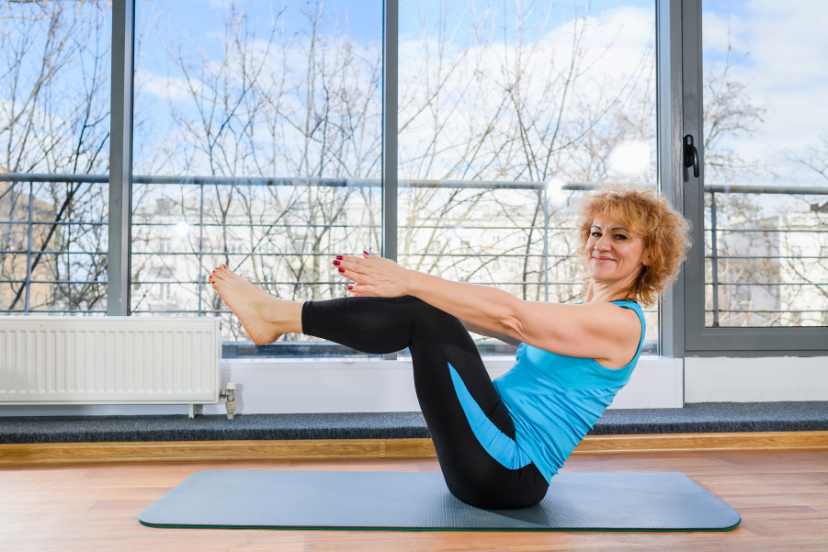Exercises to Avoid with Osteoporosis: Safeguarding Your Bones
Introduction
Osteoporosis, a condition characterized by weakened bones prone to fractures, demands careful consideration when it comes to physical activities. While exercise is essential for overall health, certain types of exercises can pose risks for individuals with osteoporosis. In this comprehensive guide, we delve into the exercises to avoid with osteoporosis to help you safeguard your bone health effectively.
Exercises to Avoid with Osteoporosis
Osteoporosis necessitates a cautious approach to physical activities to prevent fractures and further bone damage. Here’s a detailed overview of exercises that individuals with osteoporosis should avoid:
High-Impact Activities
High-impact exercises, such as running, jumping, or vigorous aerobics, can exert excessive strain on weakened bones, increasing the risk of fractures.
Exercises Involving Forward Bending
Activities involving forward bending, such as toe-touching or sit-ups, can place undue pressure on the spine, potentially leading to vertebral fractures in individuals with osteoporosis.
Heavy Weightlifting
Heavy weightlifting or resistance training without proper guidance and supervision can strain bones beyond their capacity, predisposing individuals with osteoporosis to fractures.
Exercises with Twisting Motions
Exercises involving twisting motions, such as golf swings or vigorous twisting during yoga poses, can strain the spine and increase the risk of fractures in individuals with osteoporosis.
High-Risk Sports
Certain high-risk sports, including skiing, snowboarding, or contact sports like football, carry a significant risk of falls and impact injuries, making them unsuitable for individuals with osteoporosis.
Plyometric Exercises
Plyometric exercises, characterized by rapid and explosive movements like box jumps or burpees, can place excessive stress on bones, increasing the likelihood of fractures in individuals with osteoporosis.
Exercises with Risk of Falls
Exercises that involve a high risk of falls, such as horseback riding or trampolining, should be avoided by individuals with osteoporosis to prevent fractures and injuries.
Unsupported Spinal Flexion Exercises
Exercises involving unsupported spinal flexion, such as abdominal crunches or certain yoga poses like the plow pose, can strain the spine and increase the risk of fractures in individuals with osteoporosis.
Exercises with Sudden Jerky Movements
Exercises characterized by sudden jerky movements, such as rapid twisting or jerking motions during dance routines, should be approached with caution by individuals with osteoporosis to avoid fractures.
Exercises on Uneven Surfaces
Exercises performed on uneven surfaces, such as hiking or trail running, can increase the risk of falls and fractures in individuals with osteoporosis due to the unstable footing.
FAQs About Exercises to Avoid with Osteoporosis
1. Can walking exacerbate osteoporosis?
Walking is generally considered safe and beneficial for individuals with osteoporosis as it is a low-impact exercise that helps improve bone density and overall fitness. However, individuals with severe osteoporosis or a history of fractures should consult their healthcare provider for personalized recommendations.
2. Are yoga and Pilates safe for individuals with osteoporosis?
Yoga and Pilates can offer various benefits, including improved flexibility and strength, for individuals with osteoporosis. However, certain poses or movements that involve forward bending, twisting, or unsupported spinal flexion should be avoided to prevent fractures.
3. Is swimming a suitable exercise for osteoporosis?
Swimming and water-based exercises are excellent choices for individuals with osteoporosis as they are low-impact and gentle on the joints. These activities can help improve cardiovascular health and muscle strength without placing undue stress on the bones.
4. Can resistance training worsen osteoporosis?
Resistance training, when performed correctly under the guidance of a qualified fitness professional, can help strengthen bones and muscles in individuals with osteoporosis. However, heavy weightlifting or exercises that involve twisting motions should be avoided to prevent fractures.
5. Are balance exercises beneficial for osteoporosis?
Balance exercises, such as tai chi or balance training exercises, can be highly beneficial for individuals with osteoporosis as they help improve stability and reduce the risk of falls. Incorporating balance exercises into a comprehensive exercise routine can enhance overall bone health and reduce fracture risk.
6. Should individuals with osteoporosis avoid all high-impact activities?
While individuals with osteoporosis should generally avoid high-impact activities that involve jumping or running, low-impact alternatives such as brisk walking, elliptical training, or cycling can provide similar cardiovascular benefits without compromising bone health.
Conclusion
Prioritizing bone health is paramount for individuals with osteoporosis, and avoiding certain exercises is crucial to prevent fractures and injuries. By steering clear of high-impact activities, exercises involving twisting motions, and movements that strain the spine, individuals with osteoporosis can effectively protect their bone health and enjoy an active lifestyle. Consulting with a healthcare provider or qualified fitness professional for personalized exercise recommendations is essential for safely managing osteoporosis and maintaining overall well-being. Remember, when it comes to osteoporosis, prevention is key, and making informed choices about physical activities can significantly reduce the risk of complications. So, stay active, stay safe, and prioritize your bone health with exercises tailored to your individual needs and limitations.




